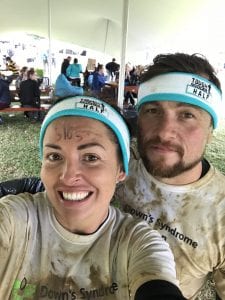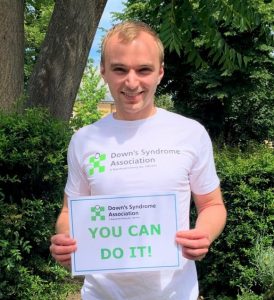 Picture the scene, you’re sat on your sofa, you’ve just finish watching Rocky and the urge to sign up to do your own challenge takes over you. You need a goal, something to train for, and you’ve decided to do it to raise money for your favourite charity. You train hard, you swap crisps for carrot sticks, you even start stretching in front of the TV at night, you’re already to go then seemingly out of nowhere a global pandemic hits and the event is postponed.
Picture the scene, you’re sat on your sofa, you’ve just finish watching Rocky and the urge to sign up to do your own challenge takes over you. You need a goal, something to train for, and you’ve decided to do it to raise money for your favourite charity. You train hard, you swap crisps for carrot sticks, you even start stretching in front of the TV at night, you’re already to go then seemingly out of nowhere a global pandemic hits and the event is postponed.
For many of you this will be a reality, and I’m sure you will be wondering what to do to hold on to your newfound fitness levels. Although we may be spending quite a bit of time indoors at the moment, there is no reason not to train. You want to hold on to your fitness levels, especially as research suggests you lose fitness three times as fast as you acquire it.
 For Runners
For Runners
 Current Government advice (correct as of 24 March 2020) means that you can still go running outside once a day, as long as you stay two meters away from anyone else who is not in your household. If you’ve been building up to the marathon, you’ve likely been participating in longer runs recently, so now is the time to scale back to shorter runs.
Current Government advice (correct as of 24 March 2020) means that you can still go running outside once a day, as long as you stay two meters away from anyone else who is not in your household. If you’ve been building up to the marathon, you’ve likely been participating in longer runs recently, so now is the time to scale back to shorter runs.
It will reduce your risk of injury and will allow you to work on technique and improving your lactic threshold. Your lactic threshold is basically the point at which during exercise your body starts to produce lactic acid, which will mean that you will not be able to keep at that pace for long before you need to rest. Lactic acid makes your muscles feel heavy and your muscles will not be able to fully contract for much longer without rest.
As a long distance runner, you want to run just below this level otherwise you will burn out quickly. But the higher this level, the faster you will be able to run before your body starts producing lactic acid, which will improve your long distance running. So, change your runs to much shorter runs (1km or 2km) and try and go as quickly as you can. Focus on maintaining good technique and posture, and make sure you warm up and cool down thoroughly. Only do this kind of run three times a week and use the other days for active recovery such as going on a walk or stretching.
For Walkers
Many of you might have been training for treks and long walks. As of current Government advice (correct as of 24 March 2020) you can still go outside for a walk once a day, as long as you stay 2 meters away from anyone else who is not in your household. This means you can still go for walks outside which is good news. You may not be able to go for as long a walk as you were training for, so try wearing a heavy rucksack to make it harder. I would also recommend doing some of the body-weight exercises or exercise videos mentioned previously at home to get stronger.

For Obstacles Course runners

 Obstacles course runners should also look to do shorter runs (1km or 2km) as quick as possible, this will mimic what you are likely to face in the race. For maintaining your strength, although you can’t go to the gym at the moment, you can still do body-weight exercises at home to keep strong. There are some really good body-weight exercises you can do at home here.
Obstacles course runners should also look to do shorter runs (1km or 2km) as quick as possible, this will mimic what you are likely to face in the race. For maintaining your strength, although you can’t go to the gym at the moment, you can still do body-weight exercises at home to keep strong. There are some really good body-weight exercises you can do at home here.
You may have noticed that loads of personal trainers are doing exercise videos you can follow along with at home, such as Joe Wicks, so you could do these as well.
For those who want a bit more of a challenge, try searching for calisthenics workouts and try a few of the body-weight moves. Some of the moves require equipment you might not have at home, so just pick exercises which you can do with no equipment. Here is a short video to show you more about calisthenics.
For All
We’ve gone through some specific advice depending on what your event was going to be. But there are things we can all be doing at home to keep fit and healthy.
Body-weight exercises are a great way to build up your strength, and they have been shown to be better for your joint health than using weights in the gym. So why not try picking a few moves to work on at home, such as a single leg squat or a clap press up? Having a challenge will keep it fun and will improve your strength.
A lot of personal trainers, such as Joe Wicks, are doing exercise videos you can do at home so give these a try.
 Given we are going to be spending more time at home than usual, this is also a great chance to do more stretching and improve your posture, both of which will improve your athletic performance. There are many different online resources you can use, such as guided stretching or yoga videos on YouTube, or blog articles on stretching.
Given we are going to be spending more time at home than usual, this is also a great chance to do more stretching and improve your posture, both of which will improve your athletic performance. There are many different online resources you can use, such as guided stretching or yoga videos on YouTube, or blog articles on stretching.
Good luck everybody! If you have any further question don’t hesitate to get in touch via email dsactive@downs-syndrome.org.uk or post on the DSA Fundraisers Facebook Group.
This article was written by Alex Rawle, DSActive Manager. Please note, Alex is a PT and all information provided was correct as of 24 March 2020.
